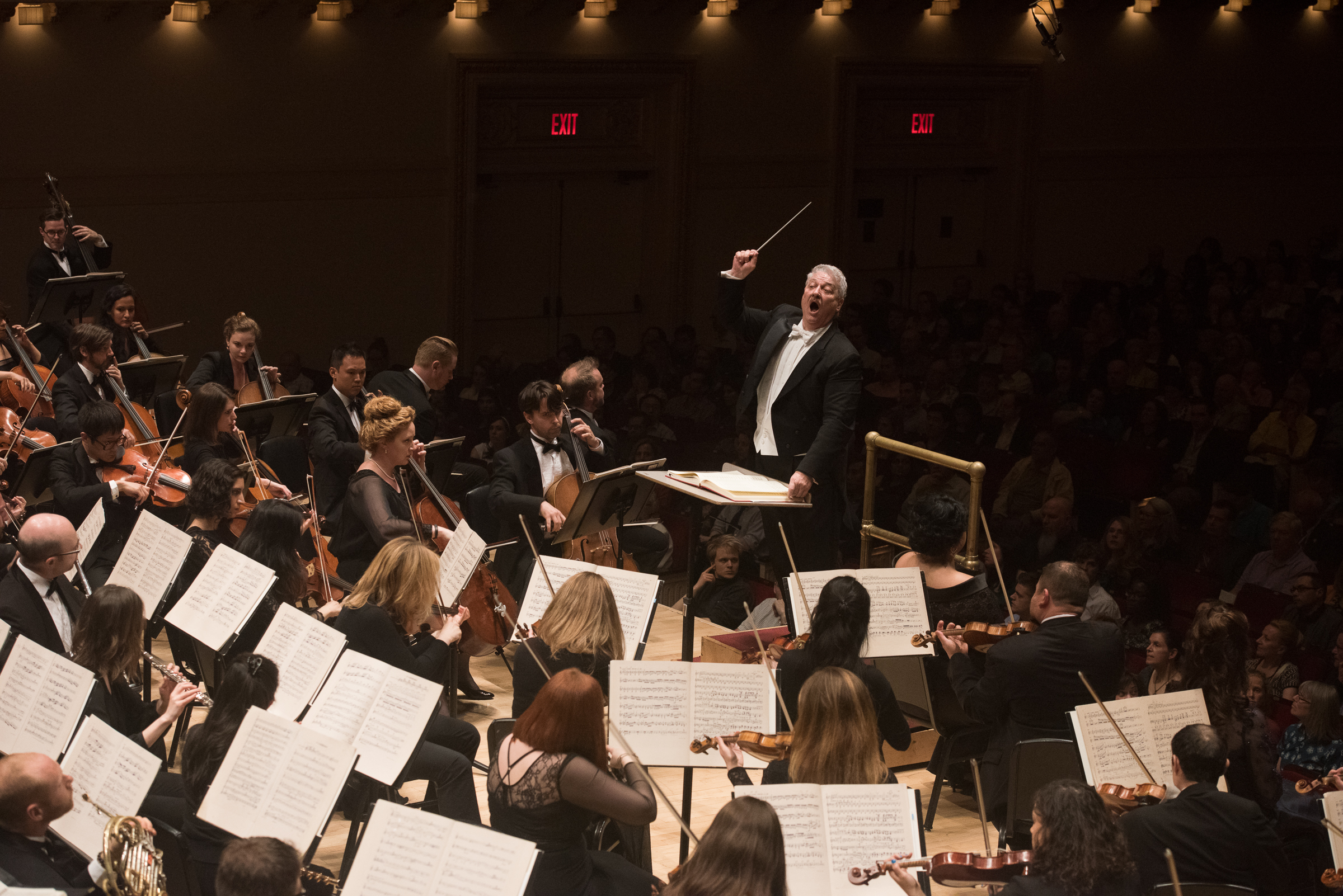Distinguished Concerts International New York (DCINY) presents Verdi Requiem
Jonathan Griffith, conductor
Distinguished Concerts Orchestra; Distinguished Concerts Singers International
Penelope Shumate, soprano; Claudia Chapa, mezzo-soprano; John Pickle, tenor; Christopher Job, bass
Stern Auditorium at Carnegie Hall, New York, NY
May 24, 2015
The Verdi Requiem is one of sacred music’s guilty pleasures, always thrilling even though you know it’s so operatic. So much so, in fact, that it was banned from performance within the Catholic church setting until the early 1960s. Or was it the fact that it was composed by a self-proclaimed atheist? The piece was written in memory of Alessandro Manzoni, a hero of the “Risorgimento,” the mid-nineteenth century movement for Italian unification. Verdi joins Mozart and Berlioz in his relish of the terrifying aspects of death rather than offering comfort to those left behind, as we find in Brahms, Fauré, and Duruflé.
DCINY presented a superior rendition on Sunday night. Due credit must go to the conductor, Jonathan Griffith (who is also co-founder and artistic director of DCINY), who assembles these gigantic choral/orchestral pieces with choirs coming to New York from all over the US and, in this case, Denmark and England. Clearly, his vision for the piece, and his ability to convey it, are crystal clear, because he gets audible results from his assembled forces.
The choir was so large that numerous female members of the soprano and alto sections had to be located in the front balconies, creating an antiphonal effect that was not unwelcome, though it did lead to minor imprecision of ensemble that did not detract from the overall impression.
The chorus thundered when the score requested, but even more critically, they whispered in terrified awe and sang beautiful plush soft chords, with many shades and colors. Verdi has structured the work as a sort of opposition between chorus and four soloists, as was noted in the excellent program notes. He spends a lot more time on the terrifying aspects of death and its aftermath Dies Irae, which always comes back just when the more comforting portions seem to be gaining a foothold.
The four soloists were all up to the operatic demands of their parts, but special mention must be made of Claudia Chapa, a Mexican mezzo-soprano, who has the true Verdi heft and color in her powerful voice. Tenor John Pickle also sang with thrilling squillo in a true Italian style that was entirely appropriate. The bass, Christopher Job, possesses a sound that is brighter and more forward-placed than I am used to for Verdi, but created a haunting and wonderful effect with his three descending Mors. Soprano Penelope Shumate created some lovely pianissimo floaty high notes, and these were her best quality, which is no small achievement. However, in other heftier spots, she risked being overwhelmed by the orchestra; and she didn’t have the requisite raw chest tones for the concluding Libera me Domine, the one that’s down an octave in the soprano’s “vulnerable” range. She and Chapa did have some gorgeous moments when they were each singing softly an octave apart.
From the first hushed descending minor triad of the orchestra, it was clear that the freelance group that calls itself the Distinguished Concerts Orchestra was in full command of the colors this score requires. I wish they were credited in the program, so I could single out some of the solo players, including the concertmaster, and numerous wind players. Also, what Verdi Requiem would be complete without the monstrous and scary “Thwack!” of the tympani in the Dies Irae? Here, it was entirely fulfilled, with what must be one of the tympanist’s most enjoyable places in the repertoire.
Verdi’s Requiem does not have the In Paradisum section that some other Requiems do, but the audience was certainly “In Paradise” and leapt to its feet for a deserved ovation.

